The document provides an overview of compilers, detailing their structure, phases, and functions. It distinguishes between compilers, which translate high-level code into low-level machine code, and interpreters, which execute code directly. Key components of compilers include analysis and synthesis phases, alongside the history and development of compiler technology.
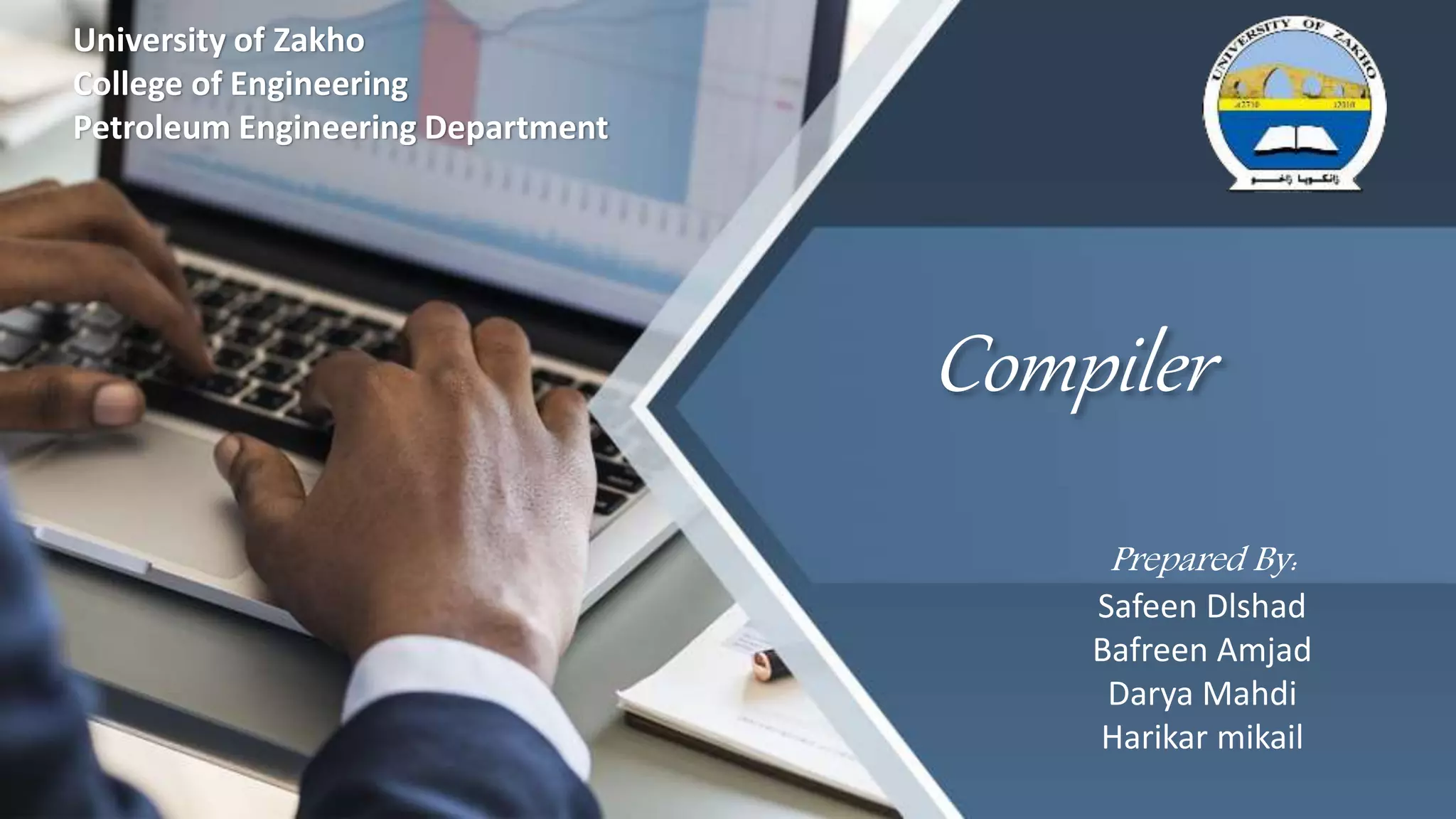
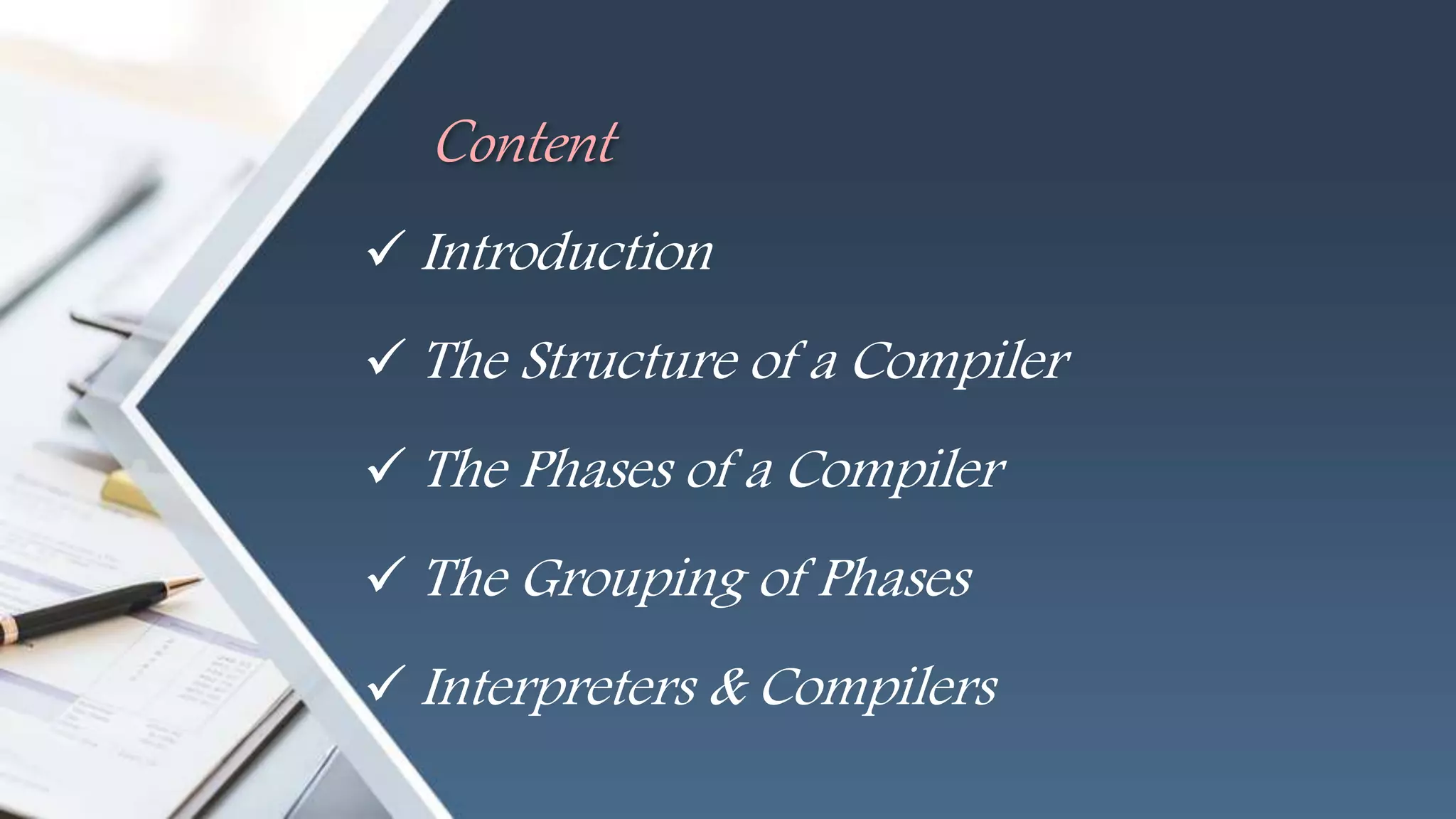
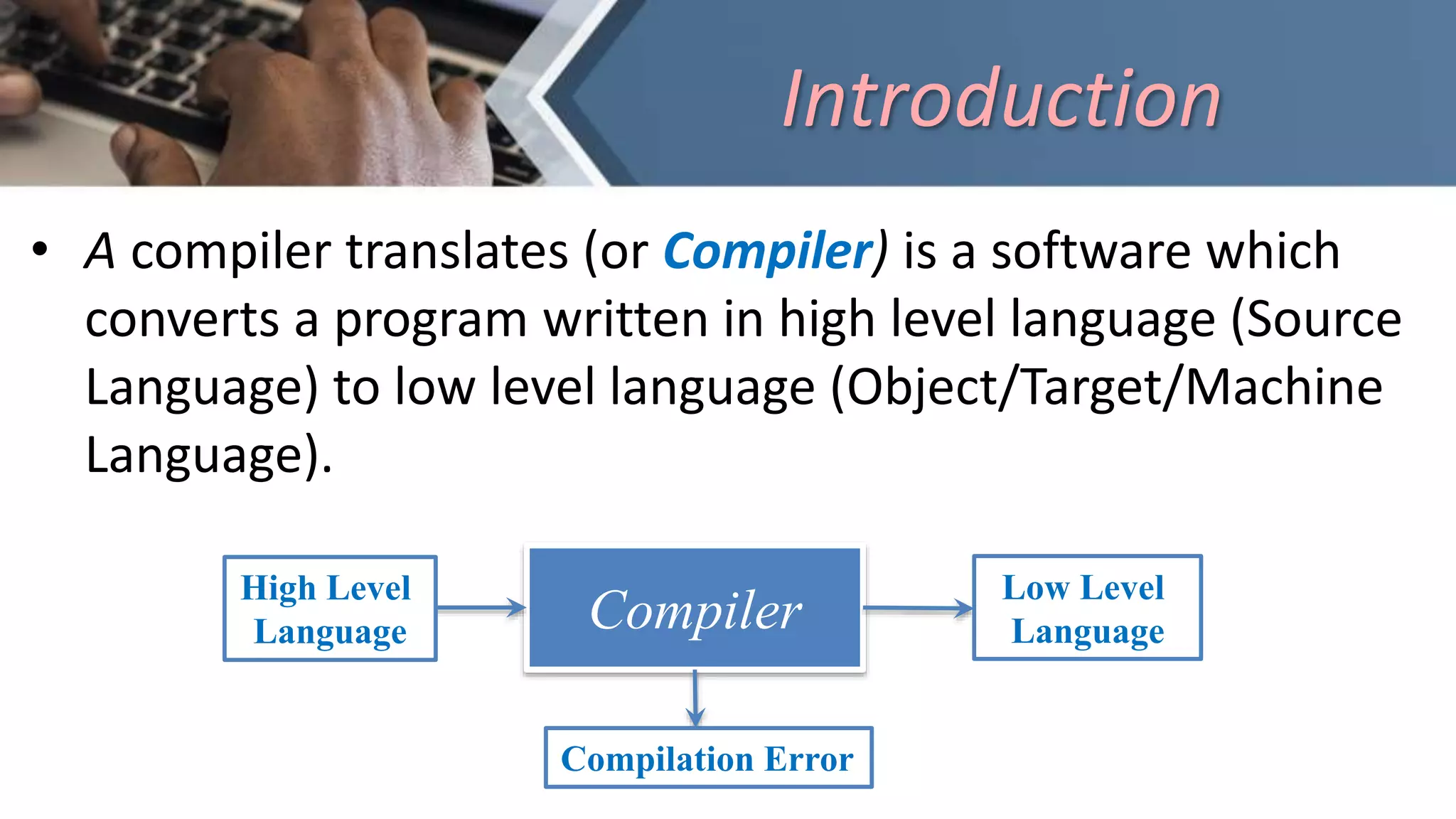
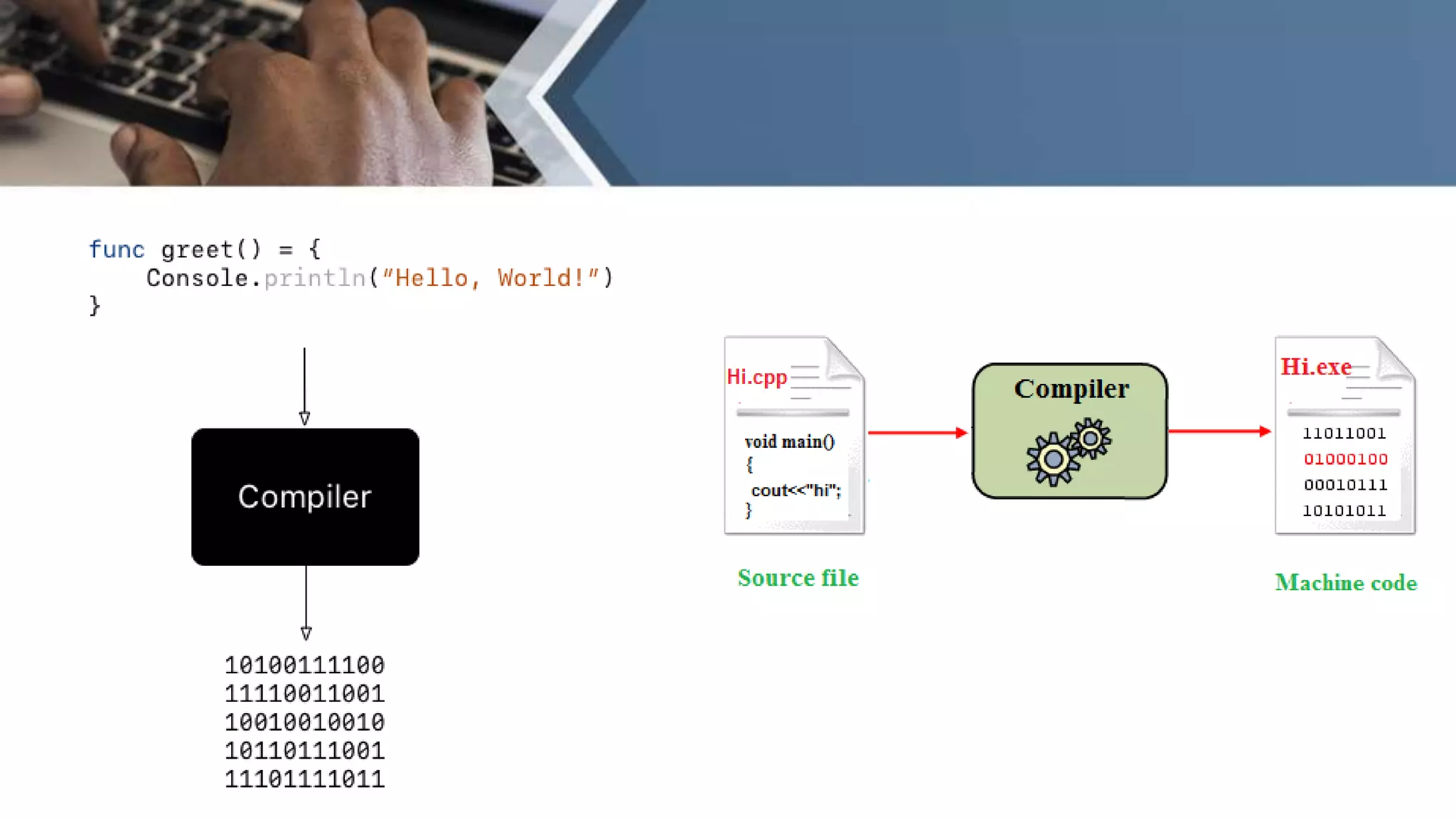
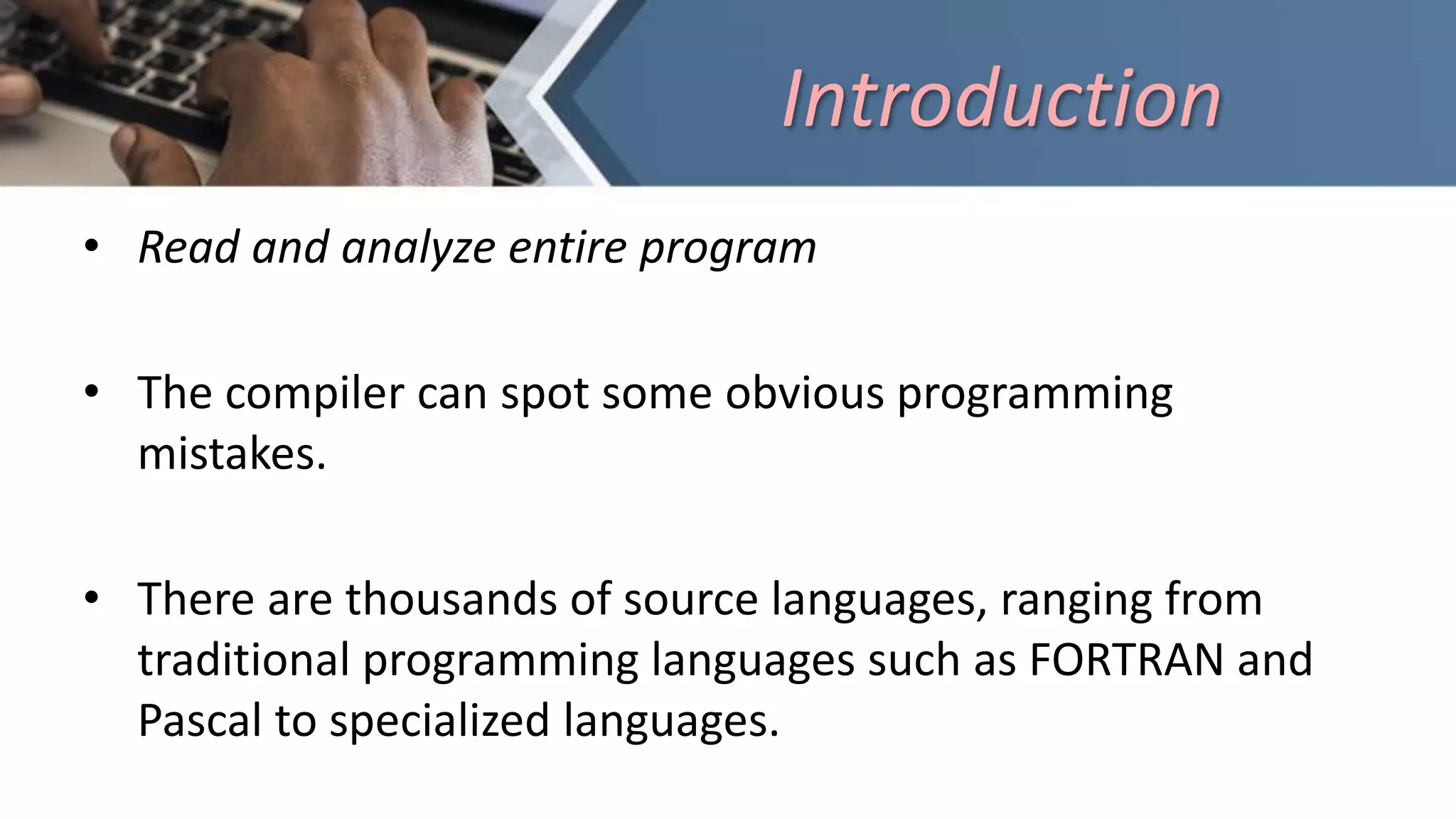
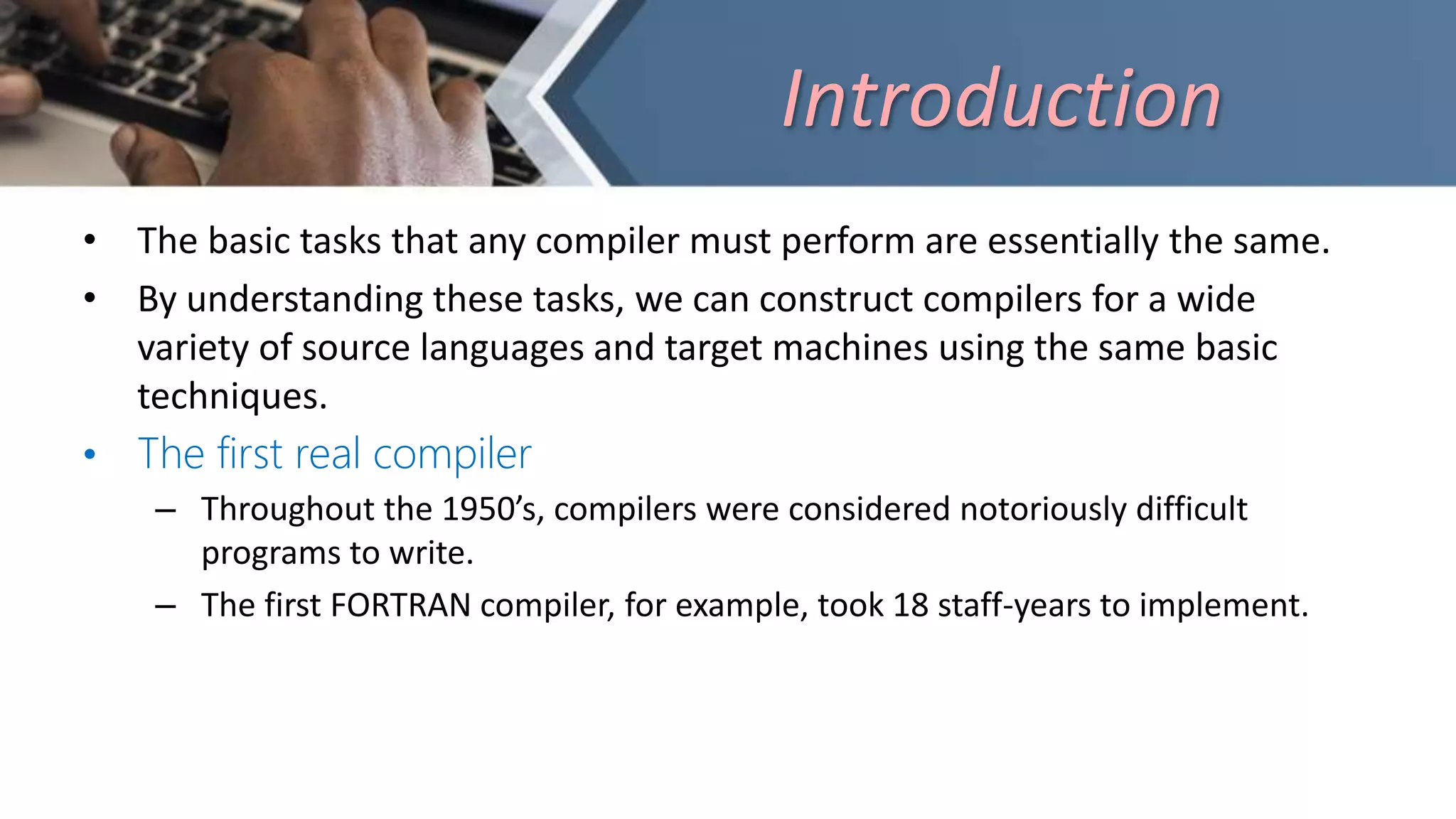
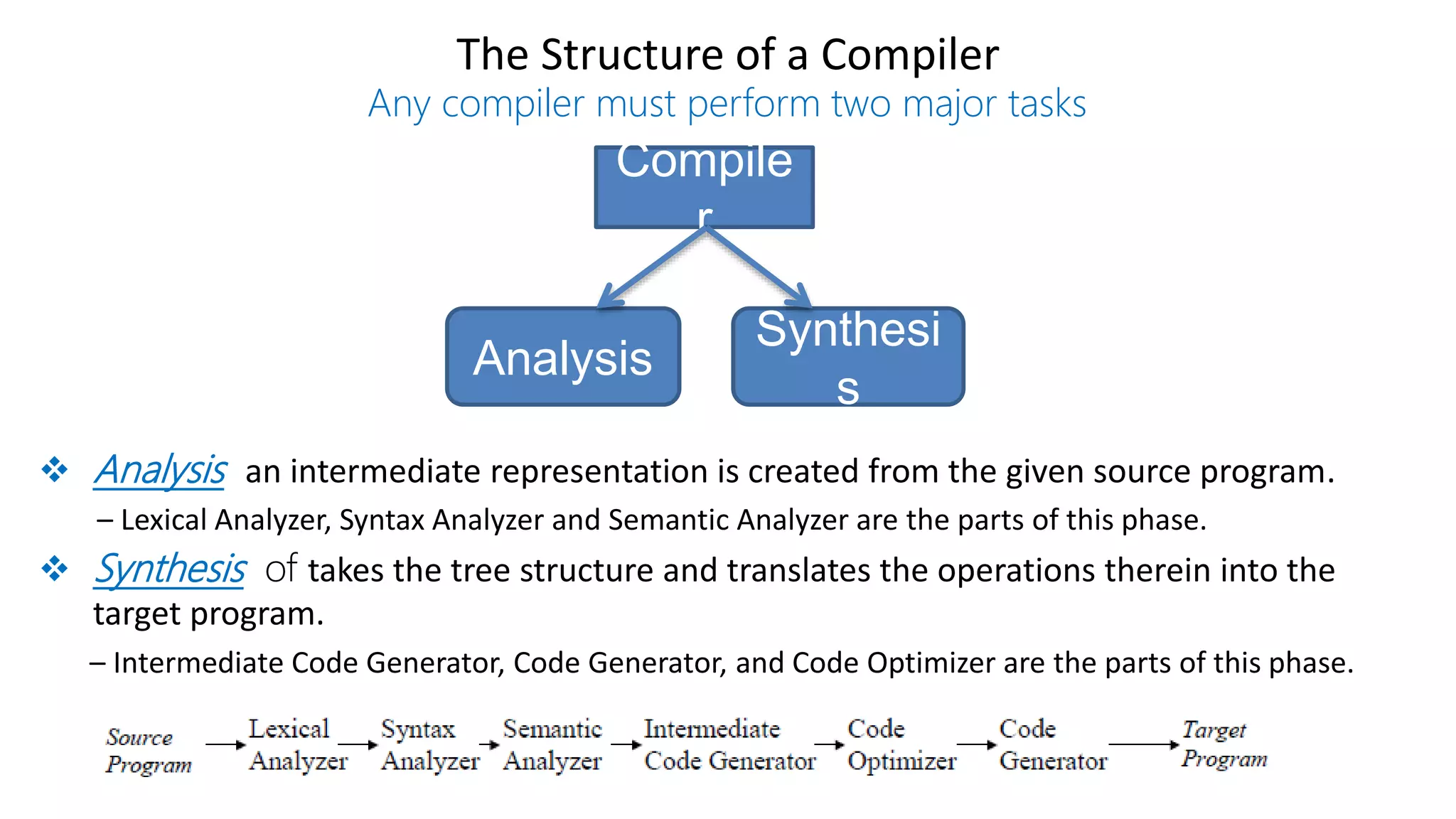
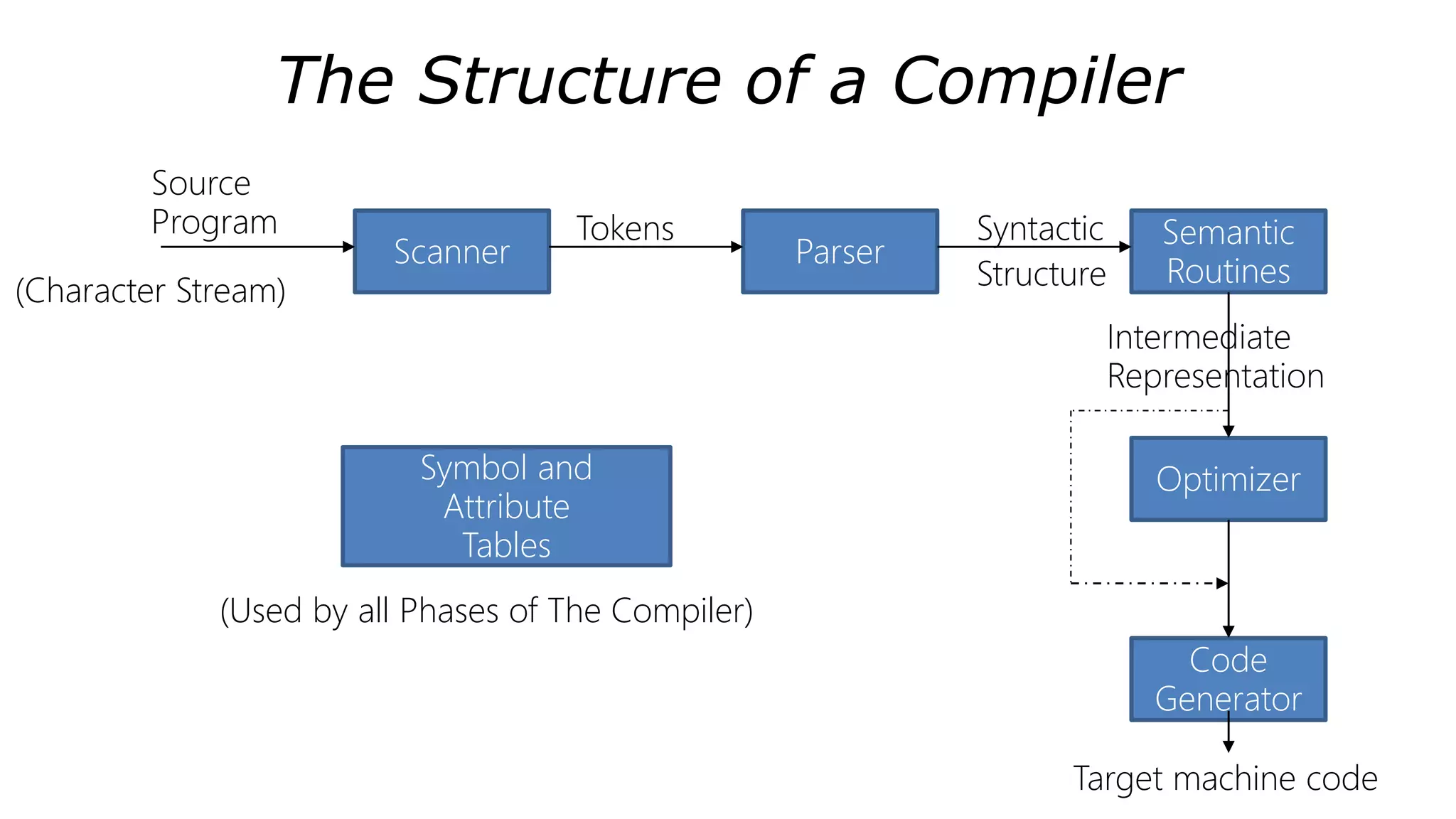
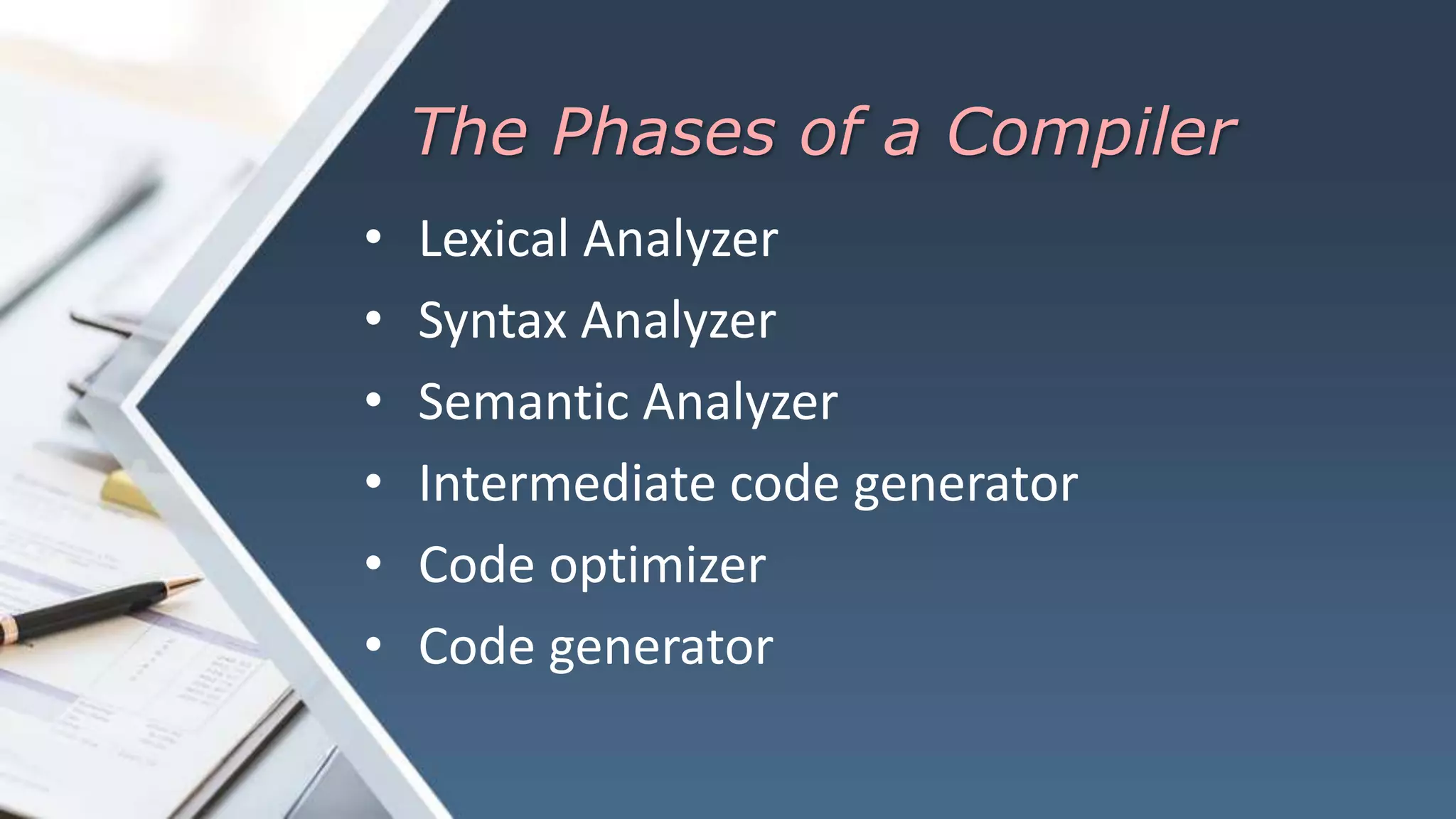
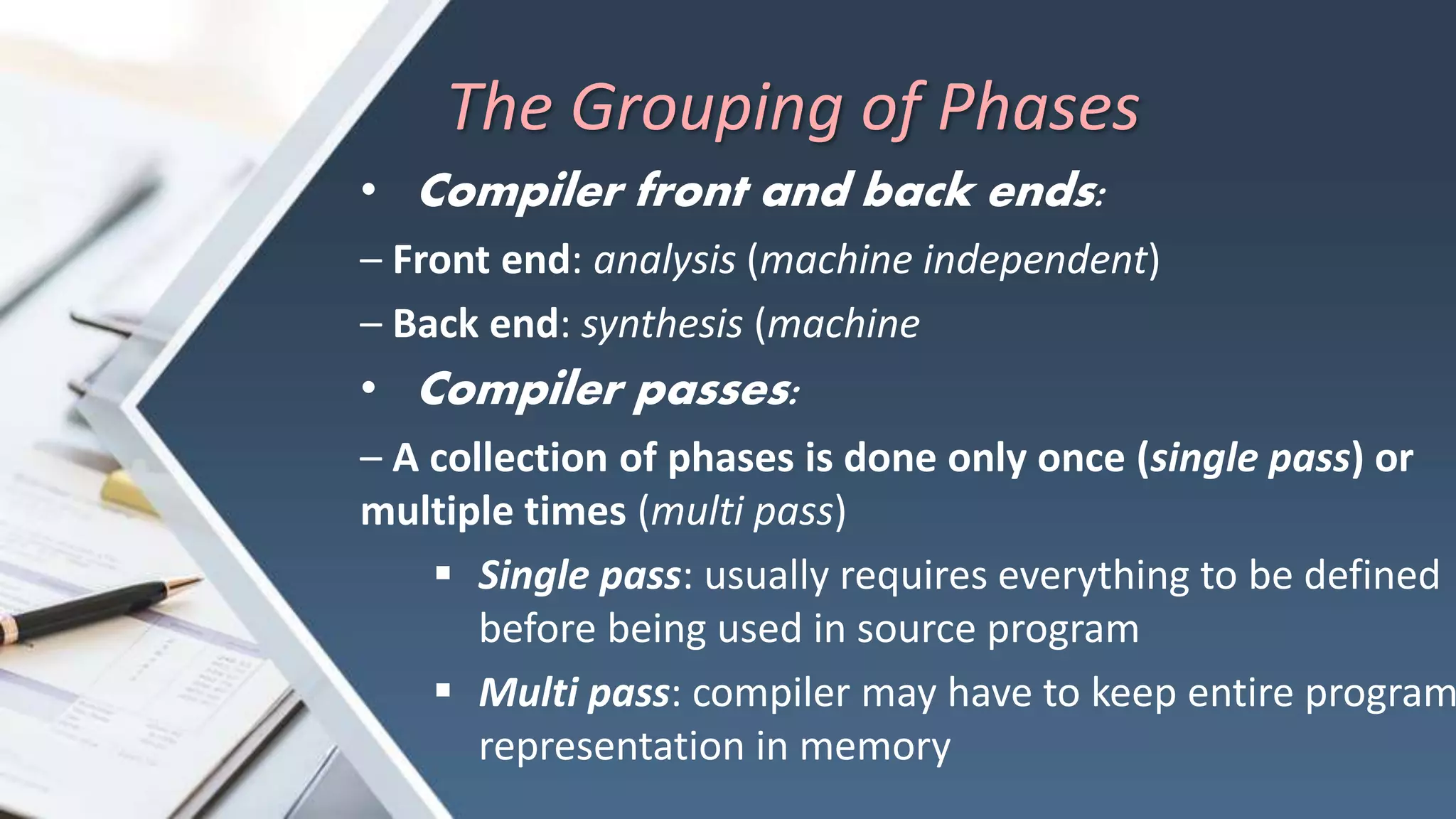
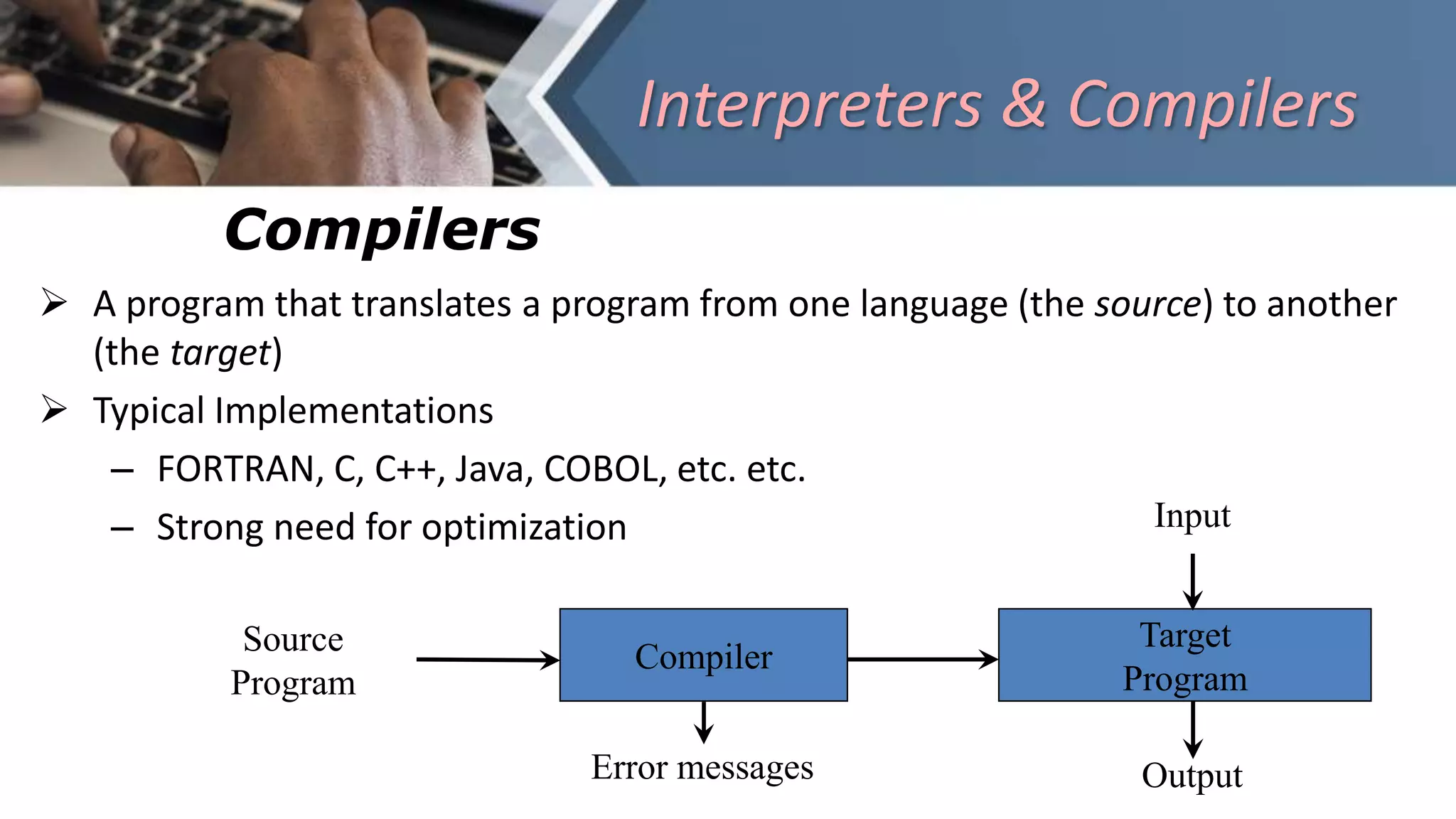
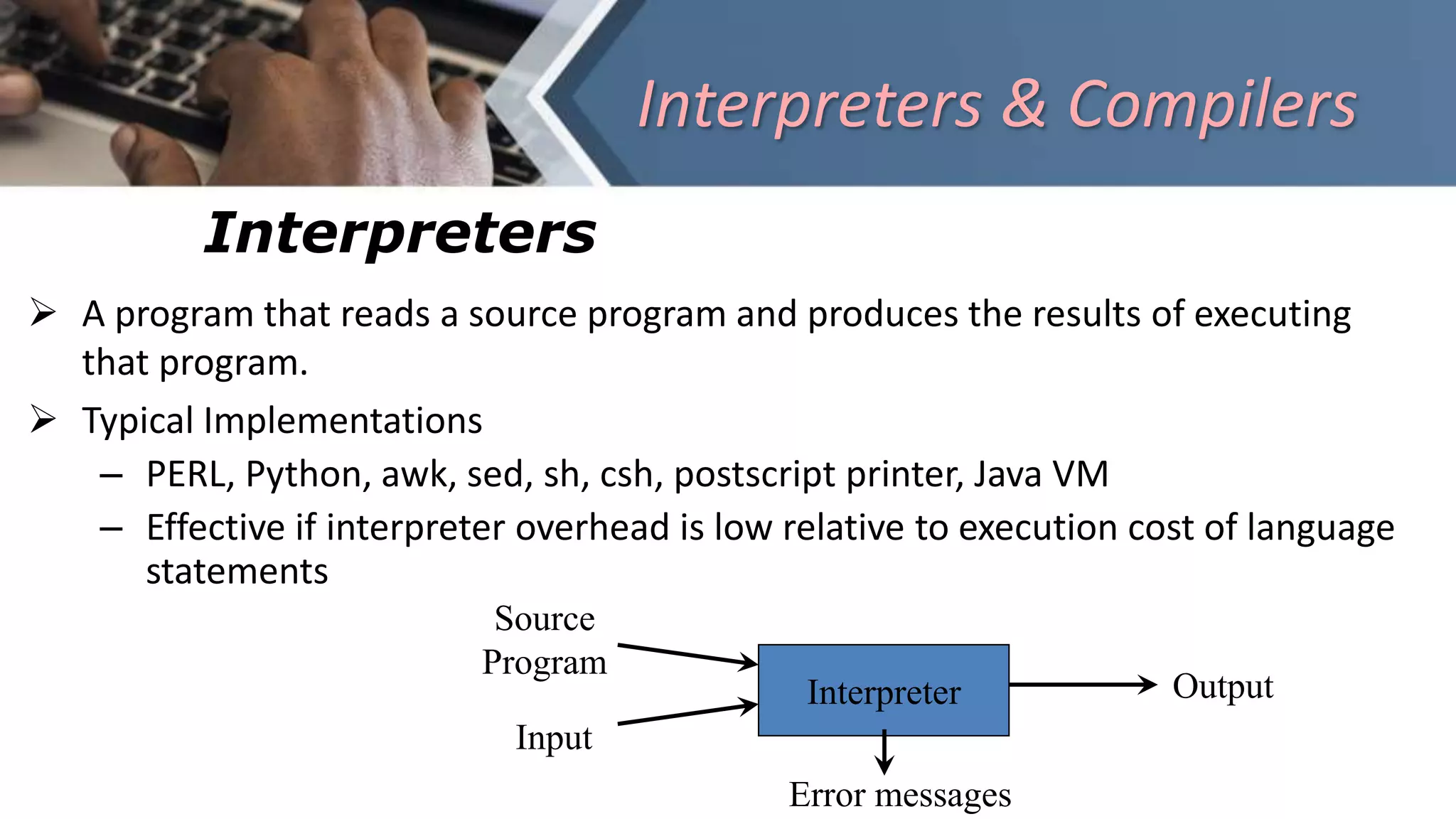
![Interpreters & Compilers
• An interpreter may need to process the same piece of the syntax tree (for
example, the body of a loop) many times interpretation is slower than
executing a compiled program.
• An interpreter executes the source program statement by statement it can
usually give better error diagnostics than a compiler.
• Compilers and interpreters both must read the input – a stream of characters –
and “understand” it; analysis
w h i l e ( k < l e n g t h ) { <nl> <tab> i f ( a [ k ] > 0
) <nl> <tab> <tab>{ n P o s + + ; } <nl> <tab> }](https://image.slidesharecdn.com/compiler-190721125034/75/Compiler-Computer-Programming-UOZ-13-2048.jpg)
